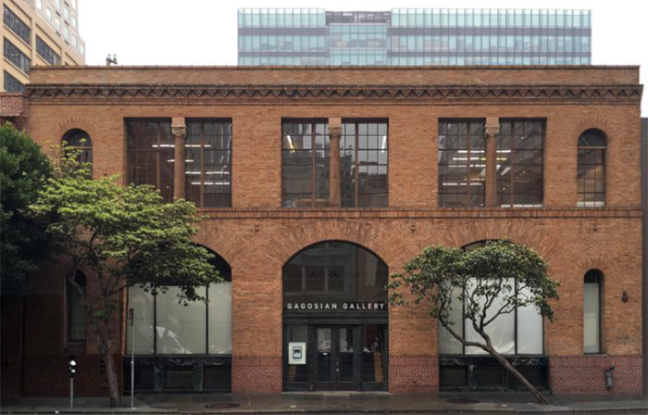Larry Gagosian’s global empire seems to annex a new city every year, but the mega-gallery’s latest conquest, San Francisco, may have been his most well timed. Positioned across the street from the soon-to-be-reopened SFMOMA, the new space stands in the heart of what everyone in the art world hopes will be Silicon Valley’s favorite cultural destination. For the project, Gagosian decided to work from a pre-existing structure, employing wHY Architecture founder Kulapat Yantrasast to renovate the ground floor of the Crown Point Press Building.
Los Angeles-based Yantrasast worked as Pritzker Prize winner Tadao Ando’s project architect (and translator) for seven years before branching out on his own. When he began wHY Architecture with his old classmate Yo-ichiro Hakomori in 2004, their new firm earned a major first commission: the Grand Rapids Art Museum in Michigan. Galleries for Harvard University and an expansion at the Speed Art Museum in Louisville, Kentucky, followed, as did commercial requests. The Thai architect completed David Kordansky’s L.A. compound in 2014.

Photo by M-Projects.
While each project brings individual challenges, Yantrasast talks about art spaces in surprisingly generalized concerns. “I design spaces for art with similar considerations, whether the work is sold or not. Good spaces start with good proportion, scale and relationship between materials and light,” he says. “Flexibility plays an even larger role in a gallery, as the space must work well for various types of art and activities.” Gagosian’s curatorial staff will have plenty of room to play with thanks to Yantrasast’s design, which makes the most of the 4,500-square-foot expanse. The gallery’s first show, an exhibition on drawing and its relationship to sculpture, promises to make good use of the space with monstrous pieces by Joe Bradley and Pablo Picasso.
On the outside, the restored building looks relatively the same. Visually connected to the bricks along SFMOMA’s Howard Street corridor, the gallery’s exterior is more about blending into the urban fabric than standing out. “It does not really respond to SFMOMA’s new architecture,” Yantrasast says. “The gallery responds to its own historic legacy and context as a building.”
While the new museum provided limited creative stimulation, the city’s natural qualities inspired Yantrasast and his team to maximize their resources. “We paid lots of attention to the quality of light in San Francisco, wanting to make sure the gallery space works as well in cloudy days as sunny ones,” the architect says. “The sense of place is so clear around there and we want to celebrate and enhance it.”



